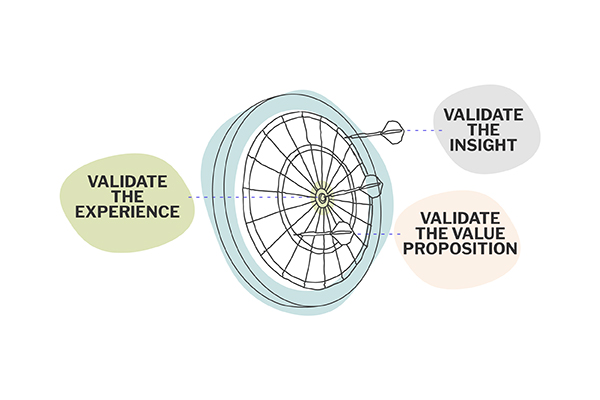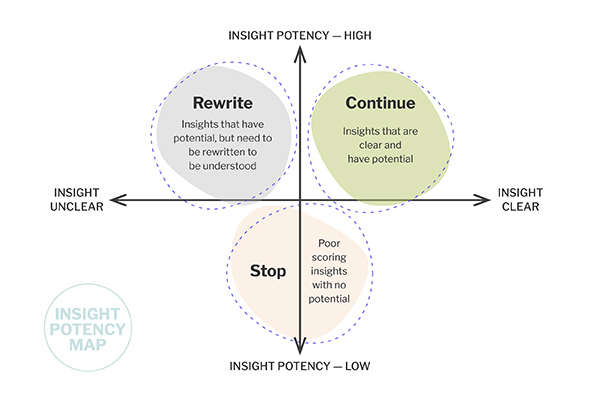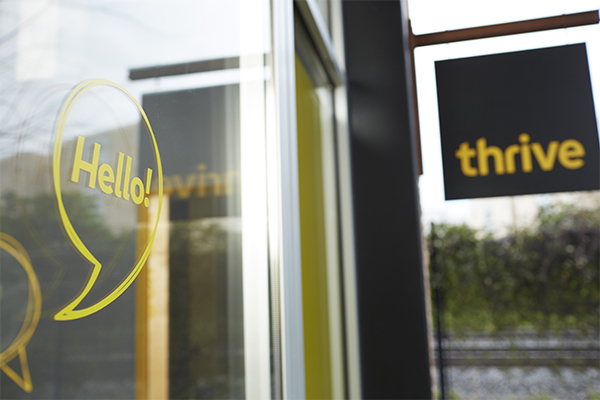Why Validating Consumer Insights Turns Human Understanding into Meaningful Business Advantage.
Have you ever bought a product or enrolled in a service that looked amazing online, but when you unboxed it or started using it, it was a total disappointment? It’s frustrating, right? So how do new product development teams miss and miss big so often? The answer is a lack of insight into the experiences potential customers want to receive.
Consumer insights are the secret sauce for meeting your customers’ needs and expectations and solving their pain points. Its insights, not ideas, that are the foundation of innovation, and successful innovation starts much earlier than the idea phase; it begins with learning about your target audience and getting to know them deeply within the context of their daily lives. Insights ensure that a concept for a product or service is relevant to your customers and answers a real need.
However, not all consumer insights are equally valid and valuable. In this article, we’ll outline THRIVE’s process for effective consumer insight validation. But before we start, we need to answer a few questions we regularly field from our clients on insight literacy to set the stage before jumping into the consumer insight validation process.
What is a Consumer Insight?
Definitions abound about what an insight is. At THRIVE, we determine if an insight is in fact an insight by examining the claim through the following four filters:
– An insight is an unrecognized fundamental human truth that reveals the inner nature of things.
– An insight is a new way of viewing the world that causes us to reexamine existing conventions and challenge the status quo.
– An insight is a penetrating observation of human behavior that results in seeing consumers from a fresh perspective.
– An insight is a discovery about the underlying motivations that drive people’s actions.
It is also worth noting what an insight is not:
An insight is not data.
Data can take many forms, but it is just that — data! Alone, it is not an insight and does not do your thinking for you.
An observation is not an insight.
The power of acute observation is essential to creating new insight definitions, but still, there is only one data point to consider, and it should never stand alone. Observations are facts that lack the “why” and the “motivation” behind a consumer’s behavior.
A customer’s wish or statement of need is not an insight.
Consumer insight is not an articulated statement of need. Insights are less apparent, intangible, and latent, a hidden truth resulting from obsessive digging and sharp perceptivity.
Empathy is not an insight.
Simply reporting what you see and feel through being empathetic is not an insight. It is, however, a vital ingredient in the process. You have to make the link to a hidden aspiration or truth for your empathy to contribute to being insightful.
(For a deep dive on consumer insights, visit our blog article: What is Insight? The Five Principles of Effective Insight Definition)
Why do you need to validate consumer insights?
Assumptions Lead to Market Failure
When it comes to product failure, there’s one factor that stands out above the rest: inadequate market analysis. It’s not enough to launch a product and hope for the best. Thoroughly understanding your target markets and consumers’ needs and staying one step ahead of the competition is essential for success. Unfortunately, many new products fall victim to the lack of a market check with dire consequences for the future of the product or service. That’s why validation is so critical in the world of product innovation. Only then can you confidently make informed decisions that will lead to a product success in the marketplace.
To Get Buy-in from the C-suite
Qualitative research insights are often doubted in the C-suite. The skepticism arises from the small sample sizes and the lack of validation through quantitative measures. Insight validation bridges the gap between qualitative and quantitative approaches to confirm or reject hypotheses from qualitative research using powerful quantitative techniques to support essential business decisions and build confidence within the C-suite.
Find Out Which Insights Resonate
Not all consumer insights carry the same weight. When delving into deep qualitative research like ethnography, it is essential to identify the insights that genuinely resonate with your target audience and have the potential to drive innovation. You can uncover themes in qualitative research, especially with small sample sizes. However, without quantitative data analysis, your emerging themes and insights are internal assumptions with no objective weight. Without good insight validation you will not be able to confidently claim that your valuable insights represent the larger target population.
Understand if your insights have revenue potential.
In product innovation, insight validation should guide the critical business decisions of deciding wether to invest in developing a new product or service or evolving an existing one. Two crucial questions can answer this:
Will it make us money?
Does it appeal to the target audience?
Your aim should be to have fewer, bigger business ideas that fuel profitable growth by being highly relevant and answering the real needs of your consumer. You must make sure your assumption on the target audience is true and big enough to pursue!
4 Steps to Effective Insight Validation
Before jumping in, we’d like to let you know that we have made a few assumptions. The first assumption is that you are using a mix of generative qualitative research methods, such as stakeholder interviews to uncover internal goals, field studies to provide real-life context (Ethnography), and in-depth interviews to understand who your target audience is as people, and what they experience in their everyday lives. Our second assumption is that the research you conducted can generate a healthy body of insight statements, at least thirty to forty, to make the validation effort worthwhile and cost-effective.
Step 1: Craft your insight statements
An insight statement turns knowledge into action through a clear, concise, prescriptive statement that turns what’s been learned in the field into an actionable direction for innovation, new product and service development.
It hinges on a 3-sentence structure designed to balance the findings of your research and analysis with a rallying call for action:
Sentence #1: The Situation
Set the context for your consumer insight statement by describing the current situation and the incumbent consumer behavior.
Sentence #2: The Frustration
Describe the consumer’s dilemma and articulate why this is a frustration in their life. It should have an emotional element that elicits a “we need to fix this” response.
Sentence #3: The Future Desire
Envision the consumer’s desired end-state and ideal situation, and describe the tangible result they’ll get from using your product or service (remembering that consumers don’t necessarily care what a product or service is, but what it does for them).
Defining these pivotal statements and ensuring they are authored consistently and without bias is critical for achieving meaningful validation results.
(For a deep dive on writing insights statements, visit our blog article: How to Write a Powerful Consumer Insight Statement)
Step 2: Filter Your Insights
If you have a large body of insight statements, you will likely not test them all; some will be more relevant and potent than others. Depending on your context, consider the following questions to inform your filtering process on which insights to take forward and validate:
-How significant is the insight for your target audience/segment?
-How aligned is the insight with your business objectives?
-Is the insight relevant to your research goals and hypothesis?
-Is the insight specific and actionable?
-Will this insight help you direct R&D spending and make suitable investments?
-Is the insight unique and has the potential to drive a new value proposition?
-Does the insight present an ample enough market opportunity for you pursue?
-Will the insight help build your brand?
-Does the insight fit your brand purpose, promise, and values?
The goal should be to select what you believe are the most relevant and impactful consumer insights for your target audience to take forward for validation tests.
Step 3: Define Your Test Criteria
Your target customers should evaluate insights in a quantitative fielded study based on their degree of understanding of the insight itself and the potential they see in the solution. We typically field studies with an emphasis on understanding the following:
Clarity: Is what the insight is saying clear to your target customer?
Freshness: Is it a new and different way of looking at the category or market?
Truth: Is the insight considered to be true?
Relevance: Can the target customer identify with the addressed need or aspiration?
Desirability: Does the target customer want this need to be addressed?
Excitement: Does the solution to the articulated need appeal to people?
You also need to evaluate your insights from an inside-out perspective to consider their actionability and determine if they have business potential and if you can deliver the solution. Also you need to decide if your consumer insights are likely enduring. Are they relevant now? Will they remain relevant?
Step 4: Analyzing Your Results and Taking Action
The validation of consumer insights statements is based on perception and should occur at the beginning of the new product development process. It is, therefore, essential to present the results in a way that conveys this. Think of it like the rings on a dart board where the outer ring is where you can score doubles is the consumer insights validation process. The next ring is where you can score triples; this is where you should develop concepts and test them quantitively as value propositions. Then there is the bullseye — the big fifty-pointer — the prototyping stage! Where you stage the experience your product or service will deliver, a tangible manifestation of your value proposition that validates if the user experience is positive and delivers on your brand promise in the eyes of your future customers. All three are forms of validation are vital if you plan to launch a new-to-world product or service that is both relevant and successful. In short, validation mitigates risk in new product and service development.
We typically present our validation findings in an “Insight Potency Map.” It’s a simple visual way to show which insights are credible and clearly understood by the target audience, driving explicit action for the product development team. Scores for each insight statement are derived from benchmarking against a database of existing insight statements from a given product or service category. Insight statements that are clear and have a high potency score should be immediately pursued and moved forward to concept and value proposition definition. Insight statements with high potency but poor clarity should be reworked and retested in a future validation study. Insights with a low potency score should cease to be developed further but not ignored.
Delivering new products and services into the market is temporal; macro trends impact categories, customer priorities shift, needs change, and consumer insights that are not highly relevant now may be in the future. The trick is to keep your insights in focus and maintain them through a process that periodically takes the market pulse and rechecks their relevance and business potential.
Plan to Validate, Plan for Success.
Validating consumer insights statements is a crucial step in developing successful products and services that align with customer needs. By utilizing a four-step process like the one used by THRIVE, companies can ensure that their consumer insights are validated with data and bridge the gap between knowledge and execution. In today’s fast-paced world, it’s more important than ever to involve consumers in the product development process and gain valuable customer feedback that can be used to develop solutions that truly matter. Validating consumer insights can turn human understanding into meaningful business advantage.
Uncover the potency of your consumer insights and unlock their transformative power!
_______________________________________
Ready to uncover the most relevant future opportunities for your business?
"*" indicates required fields
_______________________________________
ABOUT THRIVE
THRIVE is a strategic design firm innovating at the frontiers of health and well-being.
We work with ambitious leaders to create experiences that people love through Informed Design™. Our work gives leaders, teams, and organizations the courage and conviction to move confidently forward and design what’s next. You can find our innovations positively impacting lives in homes, hospitals, and businesses around the world.
We help you design growth in eight ways:
1. SHIFT PERSPECTIVE: We help you see customers with fresh eyes so you can find disruptive insights that let you tap into game-changing opportunities.
2. ACTIVATE INSIGHT: We distill insights into simple, actionable frameworks that are powerful and easy to understand so you can make smart decisions.
3. SEIZE NEW OPPORTUNITY: We find new ways for you to compete and new markets to scale, then prioritize ideas with the greatest potential.
4. SHAPE THE FUTURE: We develop actionable plans that generate growth through innovation so you can set a vision and step into your future.
5. ACCELERATE TIME TO MARKET: Our processes enable you to operate agilely, seize opportunities and get products to market quickly and effectively.
6. CREATE SERIOUS BRAND LOVE: Our human-centered, holistic approach to brands delivers big-on emotion to keep consumers coming back.
7. CONQUER COMPLEXITY: We can help you tame complexity, achieve clarity and make products and services easy to understand and a joy to use.
8. EMPOWER CHANGE: We help businesses shift their mindsets, foster new partnerships, and create momentum for innovation and growth.
Contact Us today to setup a free consultation to discuss all your specific research, design and innovation needs. Collaboration begins with a conversation!
ATLANTA | CHICAGO
















